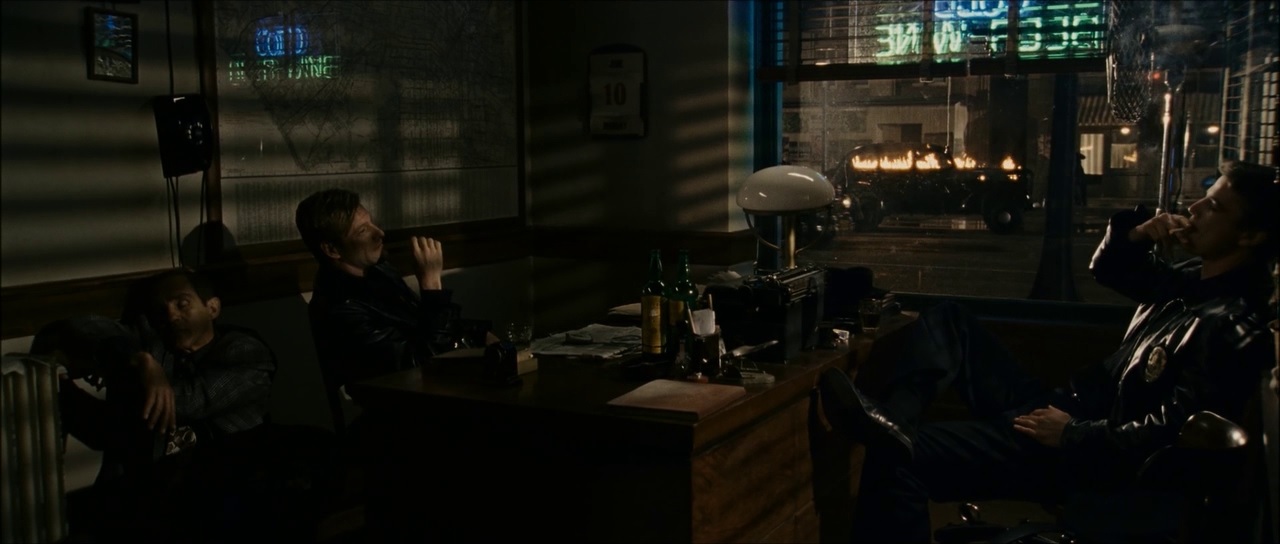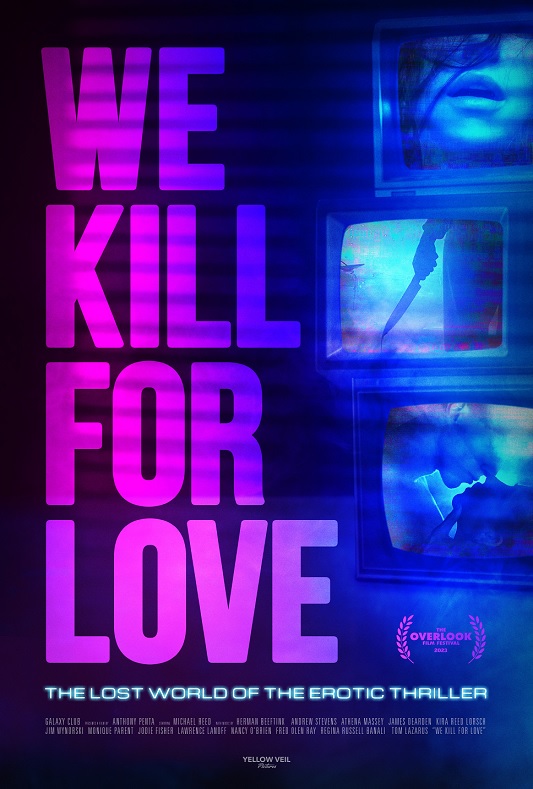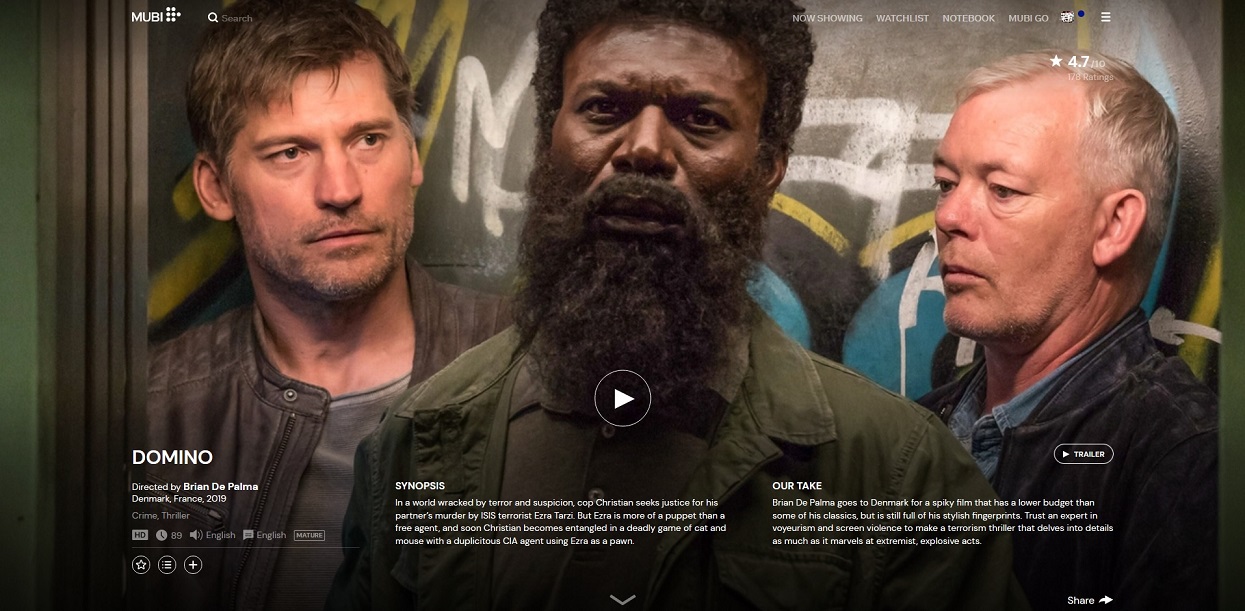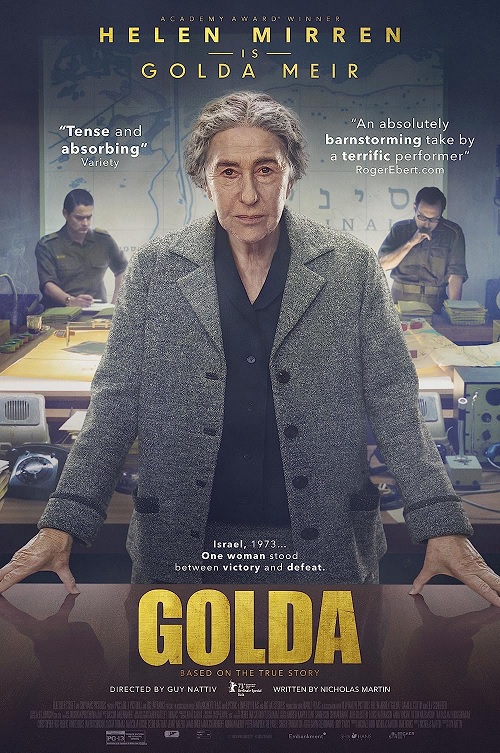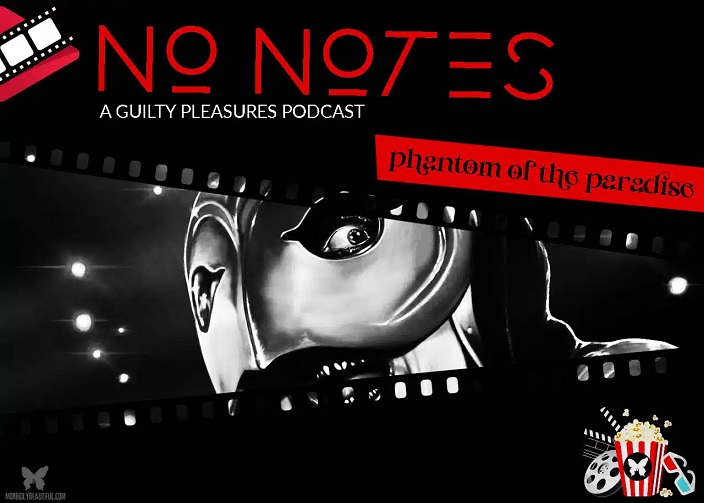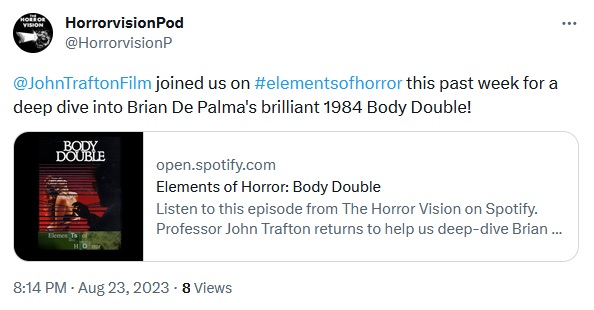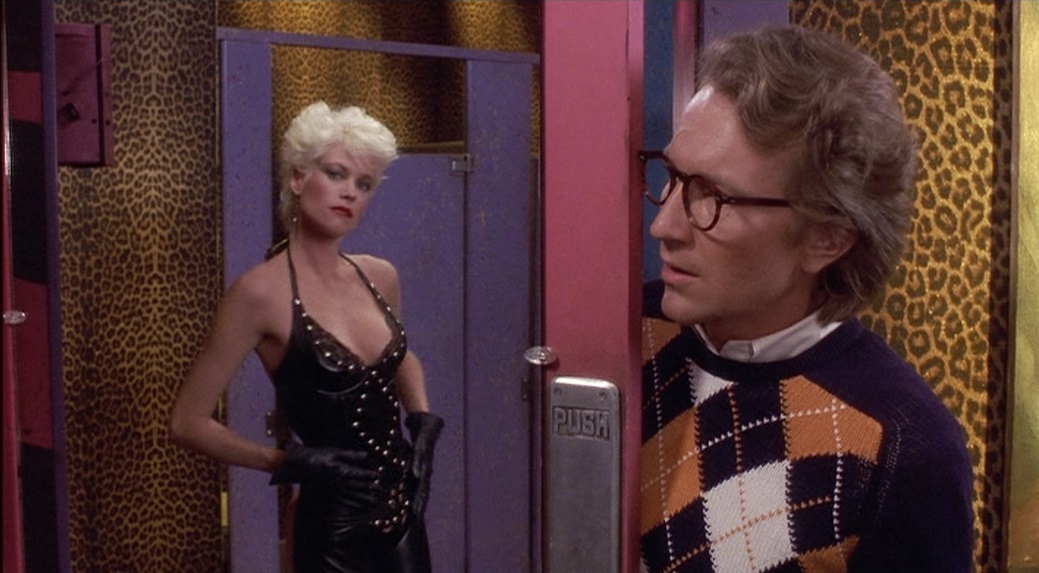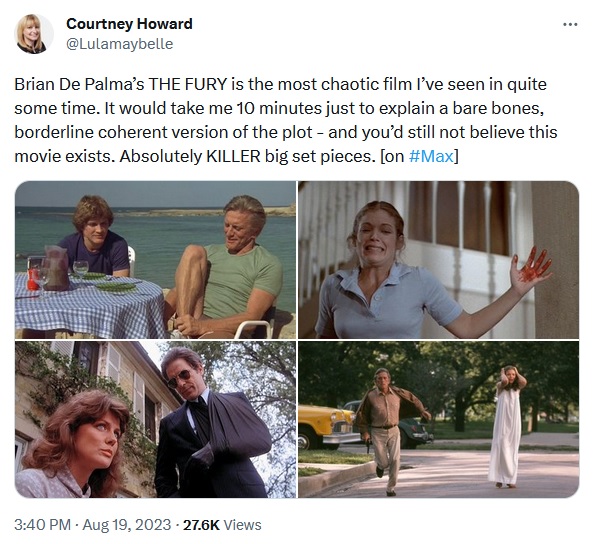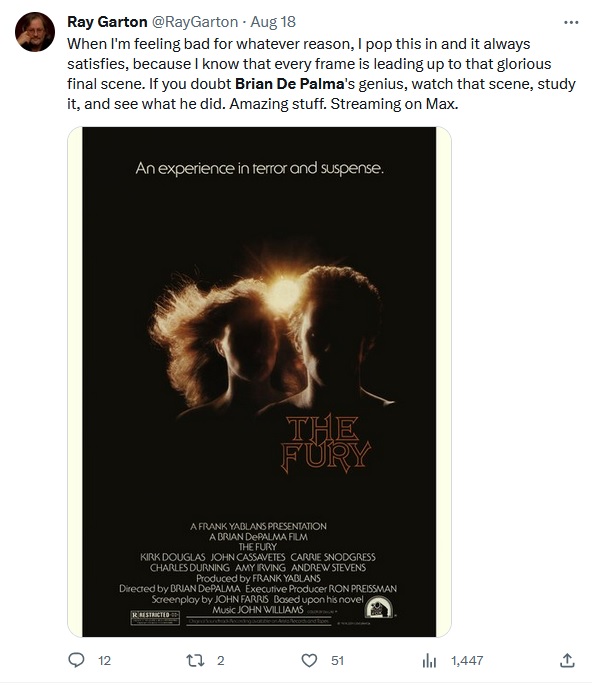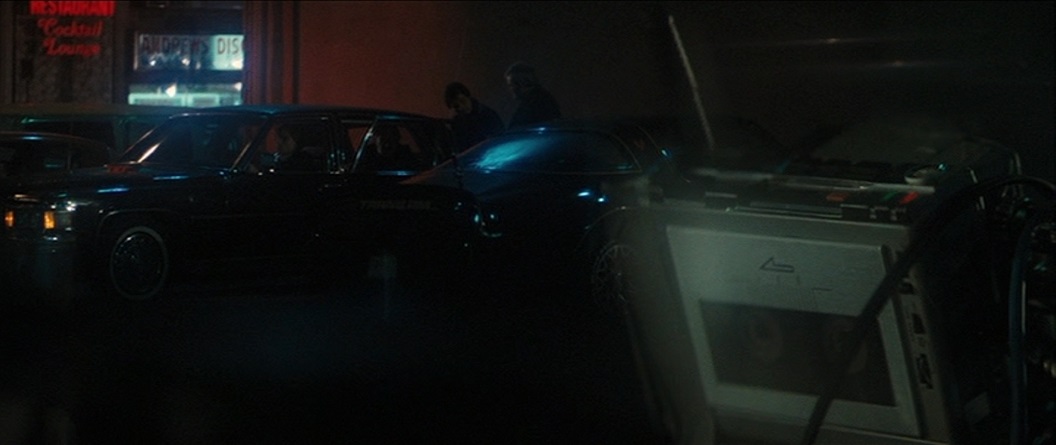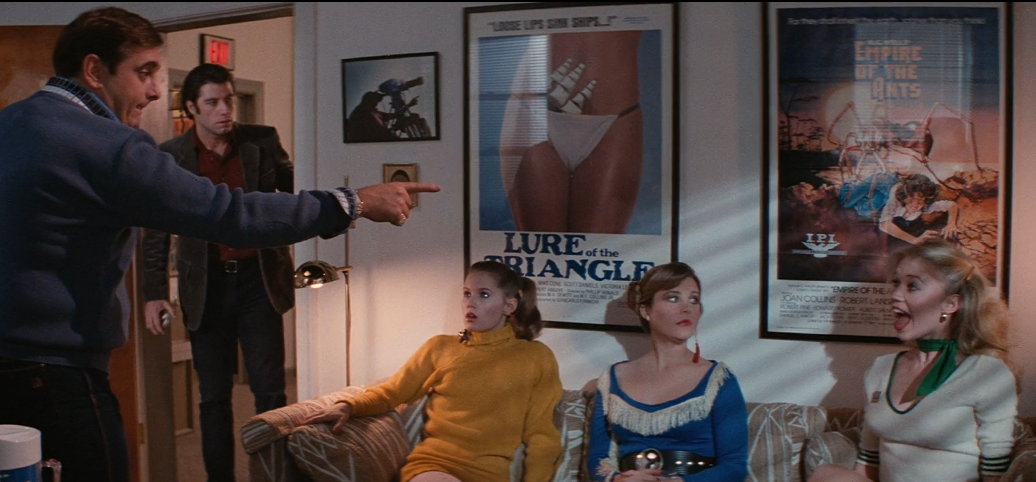COLLIDER'S PATRICK FOGERTY ON DE PALMA'S "UNIQUE & GRIPPING THRILLER"
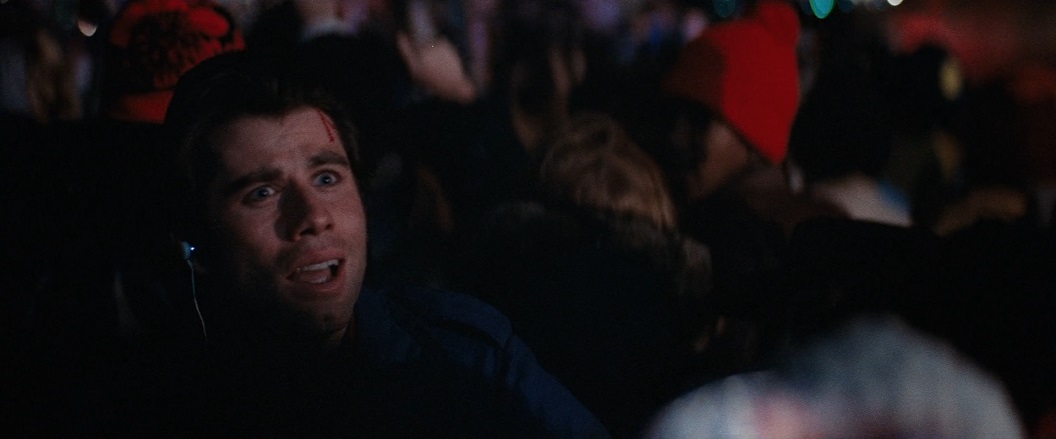
Today, Collider posted an article by Patrick Fogerty with the headline, "The Best Scream on Film Wasn’t in a Horror Movie" --
What's so fascinating about Blow Out is de Palma's ability to take what can be considered the rather bland and mundane science of sound and use it as a frame for a thoroughly absorbing and gripping tale of conspiracy, deceit, and dirty tricks. Jack is shown in the Philadelphia night, equipped with headphones and a narrow boom microphone that he moves slowly through the nearly-still evening air, trying to record varied ambient noises. He picks up the conversation of a distant couple who wonder why Jack is looking at them, followed by a staccato-sounding thump. De Palma pulls close focus on a bullfrog on the river's shore, replaced shortly thereafter by the familiar sound of a hooting owl. What would normally be a dull montage instead becomes an engrossing glimpse into how those background noises audiences hear when they're viewing their favorite films come to be.The serenity of the scene is shattered when the sound of screeching tires is heard in the distance. De Palma's camera focuses on Jack's recording equipment, with Jack's modulometer quickly ticking upward. The camera zooms in on the boom microphone itself, then moves to Jack's left headphone as a growing roar, something like a strong breeze, becomes louder. A sense of anxiousness pervades the moment, even though audiences are seeing only pieces of hardware. A sudden bang like a gunshot rings out, the modulometer springs to its highest level, and for the first time, de Palma's visuals move from the tightness of the technical fixtures to the view of a car careening out of control, crashing into a wooden bridge barrier and plunging into a river.
Jack manages to rescue the passenger Sally, but the driver, the governor of Pennsylvania and a presidential hopeful, perishes in the accident. It turns out Sally was the governor's paid companion for the evening, and the City Hall "guys in suits" do their best to keep that aspect of the incident quiet. The accident is blamed on a blown out tire on the governor's car, but Jack the expert sound technician swears he heard a bang before the blow out. Having recorded the sound of the entire crash sequence, Jack becomes obsessed with proving that someone deliberately shot the governor's car tire, causing it to hurdle into the water. Leave it to de Palma to turn a simple search for a sound effect into an intricate political white-knuckler.
Once the plot gets going, the concept of Jack's search for the perfect horror movie scream seems to disappear, but de Palma maintains focus on how sound technology is the key to cracking the case. A magazine publishes a series of shot-by-shot pictures of the crash that a photographer with nefarious intentions (Dennis Franz) has captured, which Jack then splices into film format and syncs up with his sound recording, proving his theory that the car's tire was shot out by someone hiding in the nearby brush (a subtle nod by de Palma to the famous Abraham Zapruder film of the JFK assassination). Meanwhile, a hired hit man named Burke (John Lithgow) is dispatched to take care of Sally, the woman who knows too much, before the real story gets out. Burke dupes Sally into believing he's a local Philadelphia news reporter who wants to interview her about the car accident and the proof that she and Jack have about the truth behind it. Jack is suspicious, however, so for extra protection, he wires Sally for sound before her meeting to ensure her safety and to make sure he has documentation of the conversation should the reporter be up to no good.
Immediately upon Burke introducing himself to Sally, what Jack picks up on Sally's mic convinces him she's in danger. As Burke and Sally move through a busy Philly commuter station, Jack tries to pinpoint their location by listening to the surrounding sounds — approaching train horns, subway turnstiles, the whistling of the metal tracks. After a harrowing eight-minute sequence, Jack is finally able to locate Sally based on the booming noises from a nearby fireworks display. Sally lets out a horrifying scream, but it's too late. She's murdered by Burke before Jack can reach her. Blow Out ends where it began, with Jack and his director in the screening room watching a cut of their slasher film. But now, the showering coed's silly howl has been replaced by Sally's final, tragic scream recorded by Jack. "Now that's a scream!" the overjoyed director says to Jack. A despondent Jack mutters, "It's a good scream. It's a good scream." So it was Nancy Allen's Sally who provided the best horror movie scream that, ironically, occurred in a non-horror film. And it shook moviegoers to their cores.
Blow Out's shocking, grim ending was too much for audiences to handle, and the film was a rare flop for de Palma, earning just $12 million. Despite its poor box office performance, critic Roger Ebert gave it four stars and commended de Palma for his focus on the scientific aspects of filmmaking. "This movie is inhabited by a real cinematic intelligence. The audience isn't condescended to," Ebert wrote. "In sequences like the one in which Travolta reconstructs a film and sound record of the accident, we're challenged and stimulated." And in his review of the film, Vincent Canby of the New York Times understood what it was all about, writing, "If you insist that the story be plausible, you'll miss the enjoyment of the film. You'll also miss the film's real point, which is that recording of the perfect scream." Blow Out offers the most unsettling of conclusions — that the ultimate horror movie scream can only be obtained from someone who is truly experiencing the ultimate horror.




